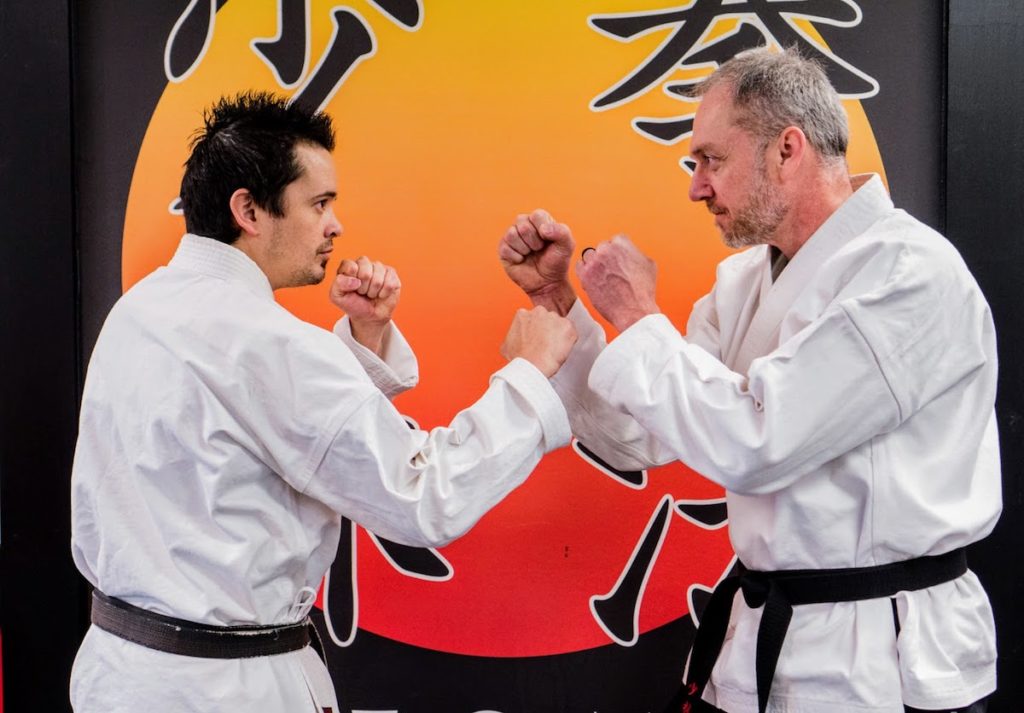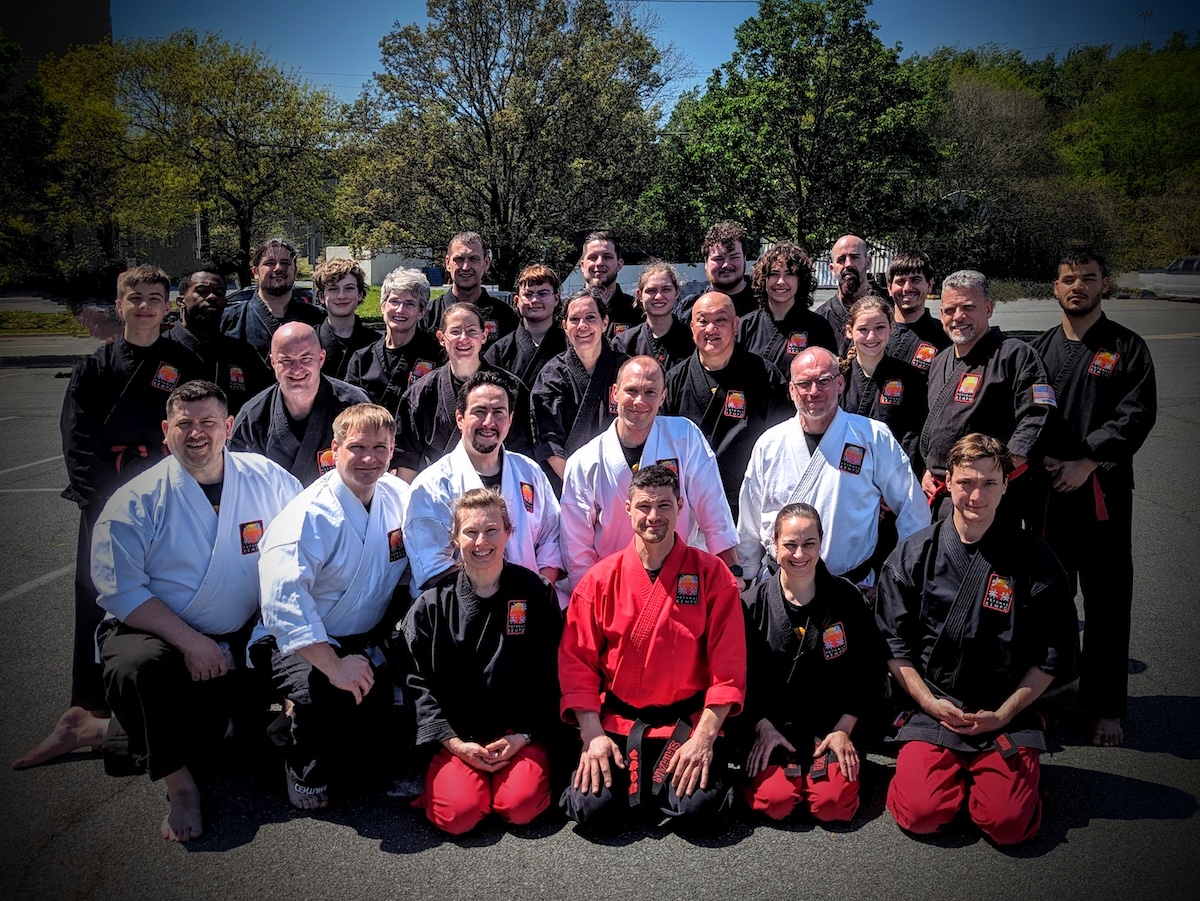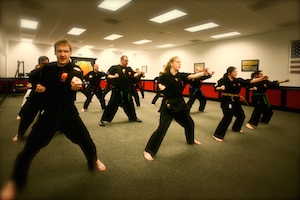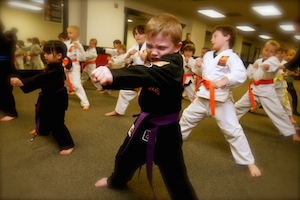At the risk of seeming to oversimplify a complicated issue, allow me to state that a block consists of three parts. The three parts are an inward check, and outward clear, and movement.
Now, before anyone takes exception to my broad generalization, allow me two caveats. The first is that there are myriad actions one can take before, during, and after a block that could conceivably confuse the isolation of a block. Secondly, and to my mind, most interestingly, a sufficiently proficient practitioner need only execute two of the three parts.
To understand the three parts and how they work together, we must first understand our limitations and our objective. For simplicity, let’s confine our discussion to a single punch being thrown towards the face (though the principles we’ll discuss hold regardless). In that case, our objective is to clear the area between our opponent and ourselves—the space through which a fist needs to travel to reach us. Our limitations, as it pertains to this discussion, is that our hands and arms only function with optimal speed and power in a relatively small area. Place your hands together at shoulder level, bend your elbows down to ninety degrees, and imagine the area proscribed by your arms. Only in that space do your hands work with maximum effect.

The Four Blocking Methods
So, as an arm travels towards you, you have a couple of options. The first is to utilize all three parts of a complete block. The other three are to use two of the three components. Thus:
- Movement, Inward Check, Outward Clear
- Inward Check, Outward Clear
- Movement, Inward Check
- Movement, Outward Clear
I will discuss these three options, but first, feel the need for some more caveats and notes. For most people, the movement mentioned will be a full footed step to the inside or outside. To the sufficiently advanced, it may only be a properly-timed and executed rotation. It perhaps goes without saying, but in the case of using some movement along with an inward check or an outward clear (but not both), your second hand is available for an extra strike before, during, or after the block.
Option 1. Movement, Inward Check, Outward Clear
After training basics in a stationary stance with the inward check and outward clear that we will discuss in Option 2, we typically move onto this scenario: Movement, Inward Check, Outward Clear — or if we didn’t we probably should have. By using all three parts of a complete block, we maximize our chance of success.
By moving, we accomplish several things, but for this discussion, we’re focussing on the fact that we can move to a place where our arms can move more effectively relative to the incoming strike. Then we can apply our inward check and our outward clear as in Option 2, but with an even greater chance of success.
Moving Beyond Option 1.
From this grounding, we can work to remove each of the three components of our block one at a time. We can come to appreciate how proper stepping can position us such that fewer movements are necessary or, when movement is prohibited for some reason, we can make do without it.
Eventually, we can learn to make our steps and our arm movements progressively smaller while maintaining effectiveness. Finally, we may discover that proper rotation can replace the need to step, but it is counterproductive to focus on—or attempt—this before one is ready.
Option 2. Inward Check, Outward Clear
This is where most of us began our martial arts training: standing in a horse stance practicing blocks. We may have worked only inward checks for a period or only outward clears for a time, but eventually, they came together.
Abstaining from footwork, we are reliant on both hands operating in the space in which they are each most capable. So, one hand executes an inward check pressing from its side of center to a little past center, and the other hand performs an outward clear from just past center to its side of center. All done with only a modicum of necessary hip movement.
That this works is terrific, but its inclusion here is more for category completion than anything else; if we can move our feet, we should.
Options 3 and 4. Movement, Inward Check OR Outward Clear
In the absence of proper movement, the range and angle of both the inward block and outward clear will be compromised, causing decreased efficacy and lowered chance of success. There are various other benefits to moving that are beyond the scope of this article, but for our purposes here, what we intend to accomplish by stepping is to move to a place where the triangle created by our arms is to one side of their arm. This allows us to rotate and apply either our inward check or our outward clear effectively.
Remarkably, by positioning correctly, we can create a situation where one of our hands can accomplish the entire block without the support of the other hand. Thus we free up our other hand for all of the other things you might want to do with it, such as striking or holding a bottle of water.
Two-Thirds of a Block
Blocking is an expansive topic, and I tried to simplify the discussion adequately to fit it all in one place. We have left out discussions of timing, ranging, preparatory movement on your part or that of your opponent, and much more. We can discuss these elsewhere, but I am going to leave off here and save that for another day. Thank you for reading; please share your thoughts.





